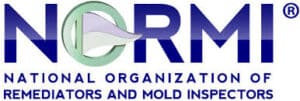Structural and Commercial Drying
Note: Yet another Northeaster will be bringing more snow and freezing temps our way, meaning water leaks from frozen pipes and leaks/flooding from melting snow. The team here at Aspen Environmental Services thought it would be helpful to forward a short piece from the>Institute of Inspection Cleaning and Restoration Certification (IICRC) about Structural and Commercial Drying.

While there are many methods for drying structural components and contents, the “in-place” drying system has been taught in the industry and used by drying contractors since the early ’80s. In those days, this method of drying components, without significant removal of furnishings or fixtures, was somewhat restricted, due to limitations imposed by extraction, evaporation and dehumidification equipment. In recent years, however, drying technology (extraction, evaporation, dehumidification), along with better understanding of psychrometry, has advanced in major ways so that in-place drying has, in some cases, become far more safe and practical.
Why use a certified technician?
Professional restoration technicians understand the need for quick response. Immediate remediation is key to controlling any escalating costs. The longer the remediation is delayed, the higher the cost of restoration. Certified restorers have the knowledge to test materials and apply the restoration techniques required to return the items to their pre-loss condition. Look for the IICRClogo to verify IICRC certification.
Source: Institute of Inspection Cleaning and Restoration Certification (IICRC)
Contact Aspen for anything related to water damage cleanup, mold testing, mold removal, or air ducts: Call 978.328.0882 or email [email protected].
Aspen Environmental professionals are licensed and insured and members of the National Organization of Remediators and Mold Inspectors (NORMI), the National Air Duct Cleaners Association (NADCA), and the Institute of Inspection Cleaning and Restoration Certification (IICRC).



